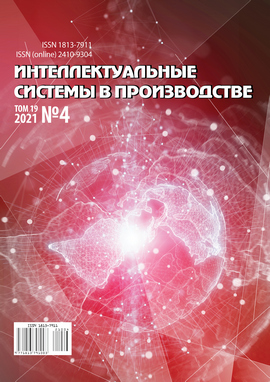Ways to Reduce FPGA Power Supply by Software Methods
DOI:
https://doi.org/10.22213/2410-9304-2021-4-88-97Keywords:
Quartus II, Power Analyzer, minimization of power consumption, portable devices, FPGA, PowerAnalyzerAbstract
The paper is devoted to solving the problem of reducing the power consumption of programmable logic integrated circuits (hereinafter FPGAs) by software methods. The solution of this issue is especially relevant for various types of radio engineering systems, which include autonomous and portable stations. At the beginning of the paper, the theoretical foundations of FPGA consumption are given: types of consumption (static and dynamic) and influencing parameters (switching logic, the physical foundations of the integrated circuit and other internal resources). The work is explained and methodological guidelines are given for the specialized built-in PowerAnalyzer utility of the Quartus II software development environment, the main indicators with which the utility works are explained: toggle rate (switching frequency) and static probability (the probability of finding a signal in a stable state "0" or "1"). The following is a Pipelinning method for eliminating the racing effect (the effect in which signals passing through an element/crystal reach the destination point with different time delays). The essence of the method is that a register is set at the output of the element that creates the delay. The register stores the value at the input at the CLK clock frequency, so random switching of the previous circuit element will be ignored. This eliminates the effect of racing and reduces the dynamic consumption of the circuit. At the end of the paper, the results of reducing energy consumption using the above methods are presented. The greatest gain is observed when minimizing consumption, when a large number of logic elements on the FPGA chip are involved, as well as when high-frequency operation occurs. This is due to the fact that when using the methods of switching off the clock frequency, we get rid of a large number of switches between the states of logic elements (the higher the frequency, the more such state switches per unit of time). If the number of occupied elements is more than 50%, we get a reduction in power consumption of more than 5%, and if the number of occupied elements is 75%, then we get a gain of about 14%.References
Зинченко М. Ю., Левадний А. М., Гребенко Ю. А. Реализация LDPC декодера на ПЛИС и оптимизация потребляемой мощности // T-COMM: телекоммуникации и транспорт. 2020. Т. 14, № 3. С. 4-10. eISSN: 2072-8743.
Vipin K. FPGA dynamic and partial reconfiguration: A survey of architectures, methods, and applications / K. Vipin, S. A. Fahmy // ACM Computing Surveys. 2018. Vol. 51. No. 4. P. 3193827. DOI 10.1145/ 3193827.
Wei G. J., Hou Y. Z., Cui Q. M., Deng G., Tao X. F. YOLO acceleration using FPGA architecture // International conference on communications in China. 2018. Pp. 734-735. ISSN: 2377-8644.
Городков П. С. Особенности разработки HDL-проектов для реализации в базисе ПЛИС серии 5578ТС // Электроника: наука, технология, бизнес. 2017. № 5. С. 50-59. eISSN: 1992-4186.
Quartus II // Altera [Cайт]. URL: http://altera.ru/ soft_quartus.html (дата обращения 20.06.2021).
Lara-Nino C. A., Morales-Sandoval M., Diaz-Perez A. Small lightweight hash functions in FPGA // 9th IEEE American symposium on circuits and systems. 2018. pp. 55-58. ISSN: 2330-9954.
Firmansyah I., Wijayanto Y. N., Yamaguchi Y. 2D stencil computation on Cyclone V SoC FPGA using OpenCL // Internatioanal conference on radar, antenna, microwave, electronics and telecommunications. 2018. pp. 121-124. IEEE 345 E47TH ST, NewYork, NY 10017 USA.
Al-Shorman M. Y., Al-Kofahi M. M., Al-Kofahi O. M. A practical microwatt-meter for electrical energy measurement in programmable devices // Measure Contr. 2018. Vol. 51. № 9-10. Pp. 383-395. DOI: 10.1177/0020294018794350.
Kulkarni V. A., Udupi G. R. A simplified method for instruction level energy estimation for embedded system // European Journal of engineering and technology research. 2017. Vol. 2, № 5. Pp. 56-59. DOI: 10.24018/ejers.2017.2.5.359.
СБИС ПЛ подсемейства Cyclone 5 // ALTERA intel FPGA [Сайт]. URL: http://altera.ru/sbis-pl-cyclone-IV-E.html (дата обращения: 10.05.2019).
Тюрин С. Ф., Вихорев Р. В. Усовершенствованный метод реализации в FPGA систем логических функций, заданных в СДНФ // Инженерный вестник Дона. 2017. № 1. 39 с. eISSN: 2073-8633.
Матвеев Д. А., Бальзамов А. Ю. Разработка системы управления полупроводниковым преобразователем электроэнергии на ПЛИС // Практическая силовая электроника. 2017. № 4 (68). С. 18-26.
Волобуев С. В., Евдокимов А. П., Рябцев В. Г. Применение аппаратных и программных средств для изменения режимов работы цифровых устройств, реализованных на ПЛИС // Инженерный вестник Дона. 2017. № 4(47). С. 74.
Решение задач трассировки межсоединений с ресинтезом для реконфигурируемых систем на кристалле / С. В. Гаврилов, Д. А. Железников, В. М. Хватов // Известия высших учебных заведений. Электроника. 2017. Т. 22, № 3. С. 266-275. DOI 10.24151/ 1561-5405-2017-22-3-266-275.
Real-time dispersion interferometry for density feedback in fusion devices / K. J. Brunner, M. Hirsch, J. Knauer [et al.] // Journal of Instrumentation. 2018. Vol. 13. No. 9. P. P09002. DOI 10.1088/1748-0221/13/09/ P09002.


